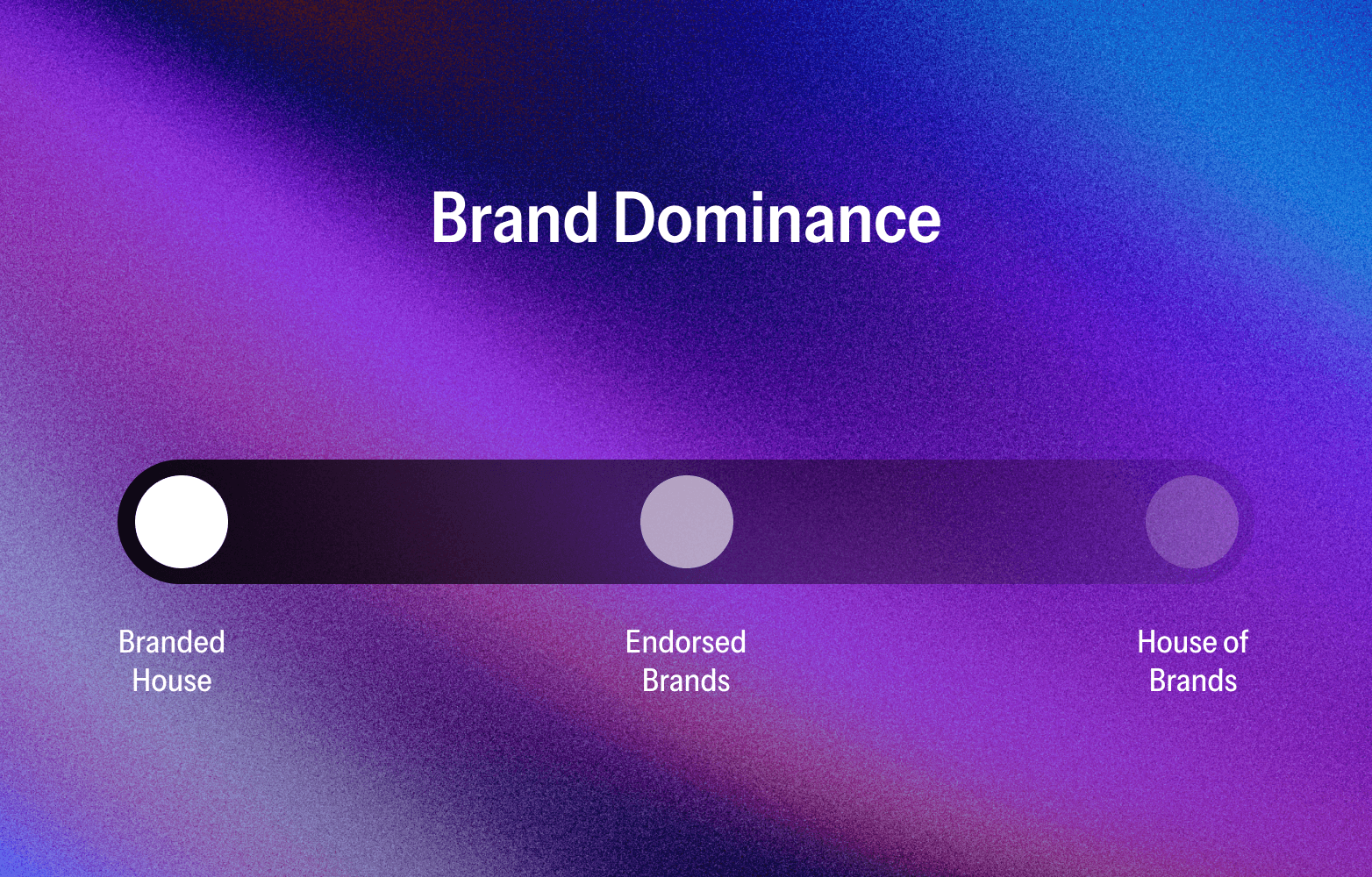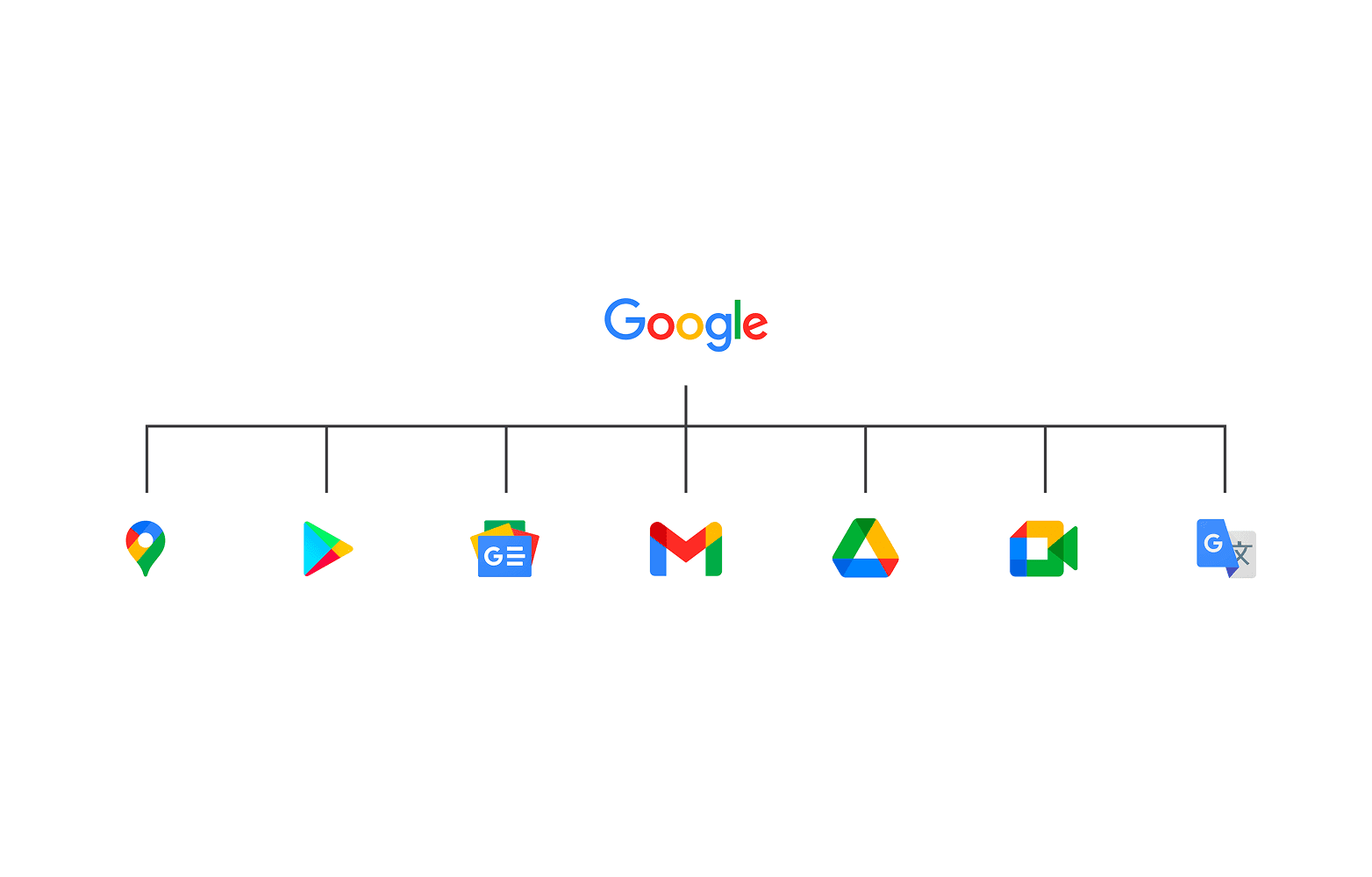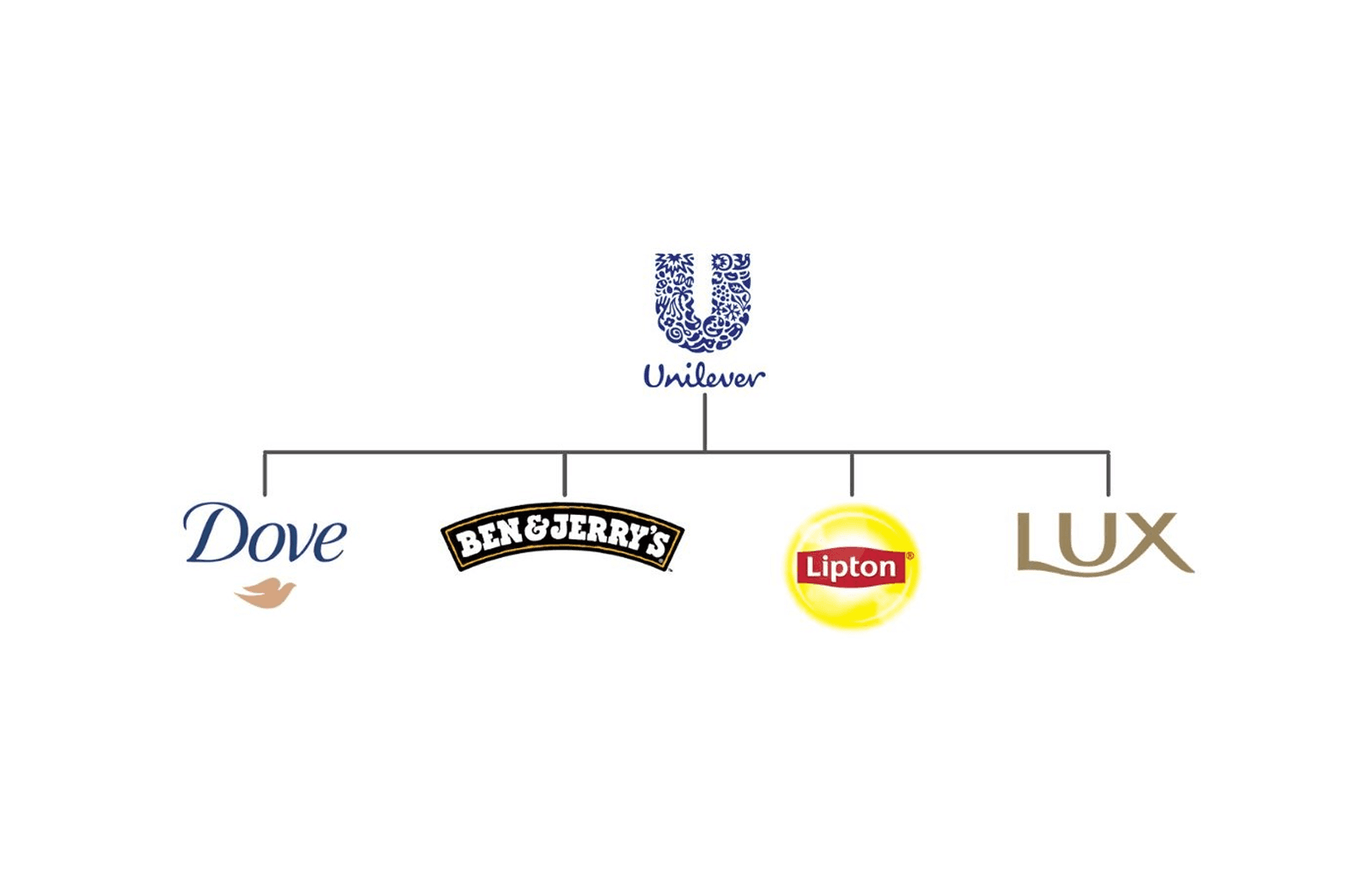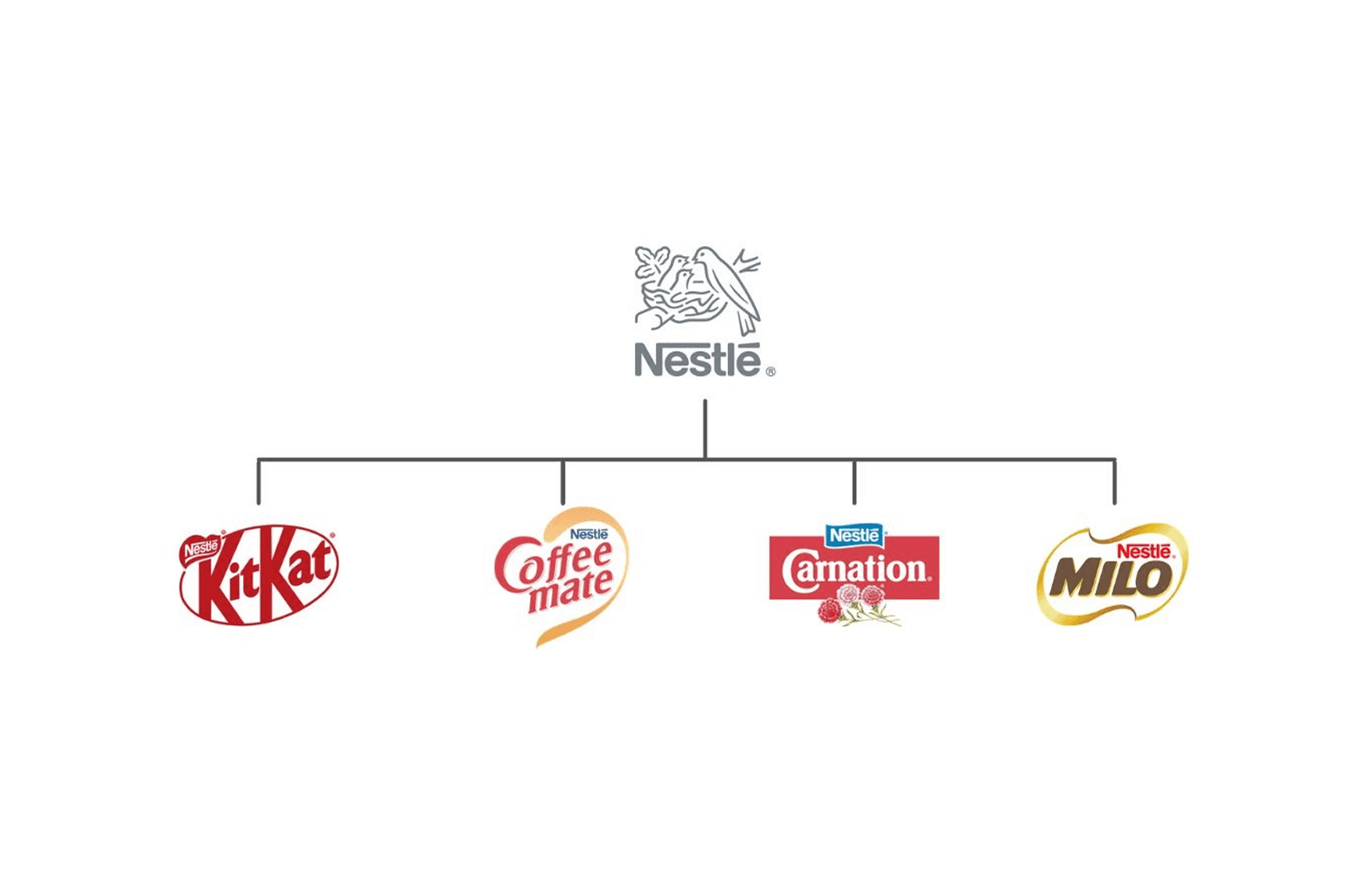Resources / Introduction
Brand Architecture: What to Pick and Which Models Fits
Understanding the Common Models of Brand Architecture
When it comes to branding, it’s not just what you offer—it’s how you organise and present it. That’s where brand architecture comes in. Think of it as the blueprint behind your brand system. It defines how your main brand, sub-brands, and products relate to each other—and to the people interacting with them.
A well-structured brand architecture brings clarity, both internally and externally. It helps teams stay aligned, simplifies decision-making, and makes it easier for customers to navigate your offering. It also sets the tone for naming, design systems, messaging, and how much autonomy or cohesion each brand element should have.
More importantly, a thoughtful architecture supports scalable branding. Whether you’re launching a new product, entering a new market, or absorbing a new acquisition, this foundation ensures brand consistency without slowing you down.
Understanding Brand Dominance Across Models

The level of dominance the master brand exerts over sub-brands varies greatly across the different brand architecture models. This spectrum can be understood as follows:
Architecture Model | Master Brand Dominance | Description |
|---|---|---|
Branded House | Very High | The master brand leads; sub-brands are direct extensions with shared identity. |
Endorsed Brands | Moderate | Sub-brands have their own identity but are visibly supported by the master brand. |
House of Brands | Low to None | Sub-brands are independent; there's little to no visible connection to the parent. |
Hybrid | Variable | Combines elements of all; some sub-brands are heavily branded, others independent. |
This spectrum illustrates the strategic choices companies make when managing their brand portfolios. A Branded House builds strong recognition for a single brand, while a House of Brands allows maximum freedom and market segmentation. Endorsed Brands offer a middle ground, and Hybrid models provide flexibility to adapt based on business needs, acquisitions, or market shifts.
The Four Core Models of Brand Architecture
Depending on your strategy and market, there are four common models that most brands work within. Each has trade-offs—so choosing the right one should match your long-term brand goals and the kind of experience you want to create.
Branded House (Monolithic)

What it is:
A single master brand spans across all products and services. Everything—from names to visual language—lives under one unified brand identity.
Why it works:
You build equity in one brand. Every product launched benefits from shared recognition and trust.
Examples:
Apple → iPhone, MacBook, Apple Watch
FedEx → FedEx Ground, FedEx Freight
Virgin → Virgin Atlantic, Virgin Media
Pros:
Clear, cohesive brand experience
Streamlined marketing efforts
Strong equity building over time
Cons:
One brand misstep affects everything
Can limit flexibility across audiences or price points
Best for:
Brands with a focused offering and a desire for strong brand consistency.
House of Brands (Pluralistic)

What it is:
The parent company owns a portfolio of individual brands, each with its own identity, audience, and strategy. The parent name might not even be public-facing.
Why it works:
You can target different segments without overlap or confusion.
Examples:
Procter & Gamble → Tide, Pampers, Gillette
Unilever → Dove, Axe, Ben & Jerry’s
Pros:
Brand independence
Crisis in one brand doesn’t impact others
Easier integration of new acquisitions
Cons:
High marketing and management costs
No equity shared between brands
Organisational complexity
Best for:
Large organisations with broad product categories or acquisition-heavy strategies.
Endorsed Brands

What it is:
Sub-brands have their own look and feel, but are visibly supported by a parent brand—usually in the name, logo, or tagline.
Why it works:
You get the best of both worlds: trust from the parent, and freedom to build something niche.
Examples:
Courtyard by Marriott
Sony PlayStation
Kellogg’s Special K
Pros:
Leverages parent brand trust
Sub-brands can target specific niches
Faster entry into new markets
Cons:
Some brand risk transfer
Requires dual branding strategies
Potential for customer confusion
Best for:
Brands wanting to branch out while still leveraging the parent brand’s equity.
Hybrid Architecture

What it is:
A mix of the above models. Some brands are tightly aligned to the parent, others operate independently, and some sit somewhere in between.
Why it works:
It offers maximum flexibility—especially useful for growing or acquisition-heavy businesses.
Examples:
Disney → Disney+, Disney Parks (branded) + Pixar, Marvel, ESPN (independent)
Toyota → Toyota (mass market), Lexus (luxury)
Marriott → Marriott Hotels (core), Westin (independent), Courtyard (endorsed)
Pros:
Adapts to a wide range of products and audiences
Supports legacy brands and new ventures
Strategic freedom
Cons:
Complex to manage and scale
Risk of brand inconsistency
Requires strong internal governance
Best for:
Large, diversified companies managing a wide-ranging brand portfolio.
Quick Comparison
Model | Structure | Strengths | Watch Outs | Examples |
|---|---|---|---|---|
Branded House | One master brand for all offerings | Unified identity, cost efficiency | One crisis affects all | Apple, Virgin, FedEx |
House of Brands | Multiple standalone brands | Brand independence, market reach | Costly, complex to manage | P&G, Unilever, Yum! Brands |
Endorsed Brands | Sub-brands backed by parent name | Trust transfer, flexibility | Requires balance, dual messaging | Marriott, Kellogg’s, Sony |
Hybrid | Blend of all structures | Versatility, legacy brand support | Internal complexity, risk of dilution | Disney, Toyota, Marriott |
So, Where Do You Start?
There’s no one-size-fits-all approach to brand architecture. The right model depends on your goals, audience, and long-term brand strategy. Some companies start as a branded house and evolve. Others begin with a house of brands to keep things separate.
Whatever path you take, the aim is the same: build a clear, scalable brand system that supports consistency and empowers growth. At Sameness, we believe the structure behind your brand should be just as thoughtful as your design—and just as adaptable.